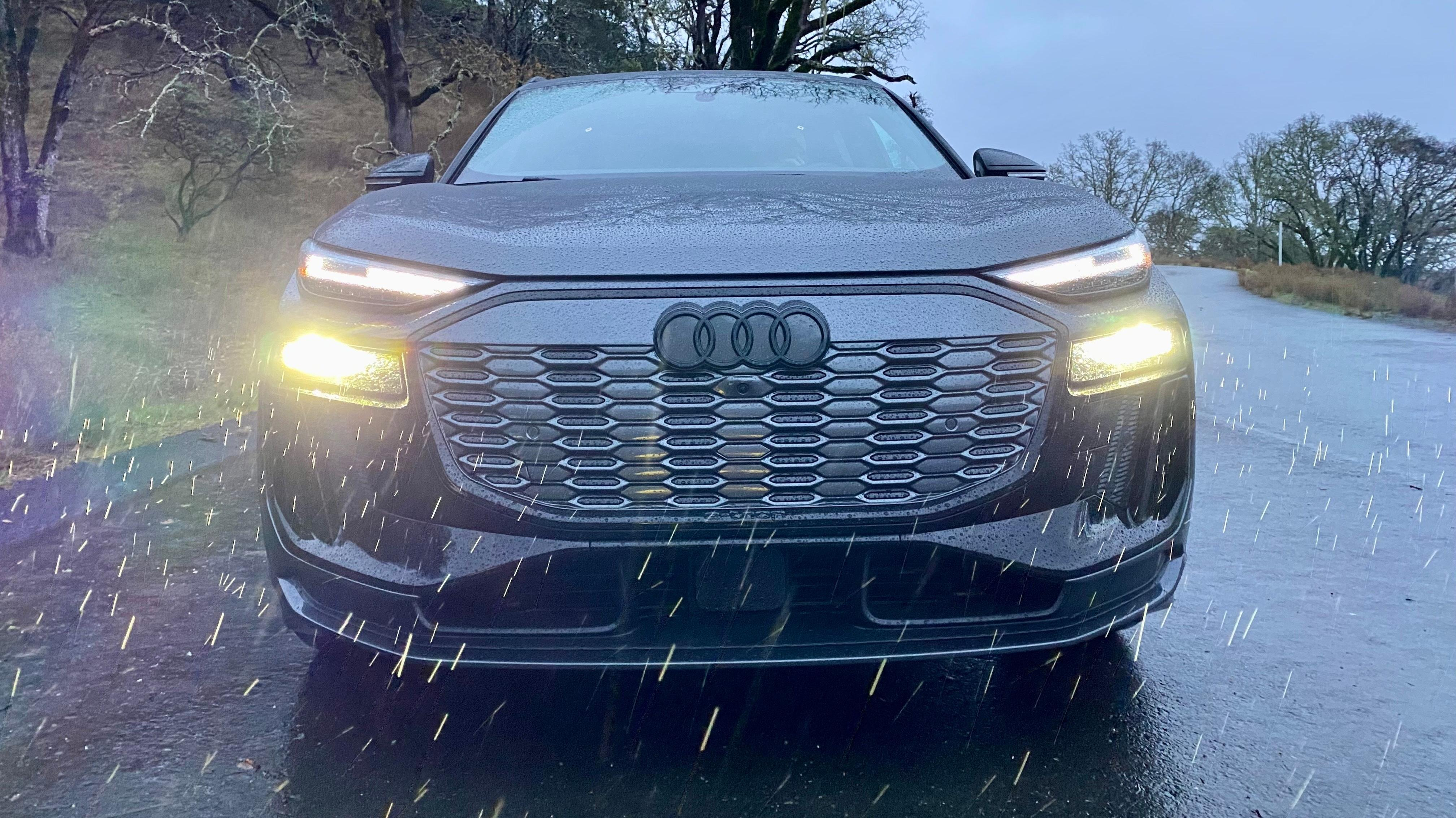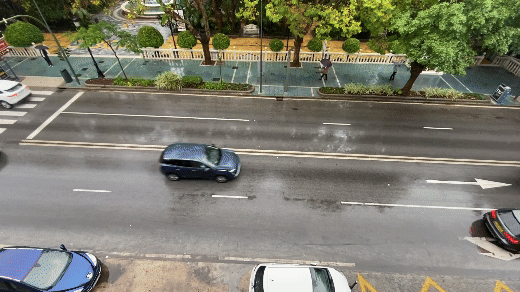Here Are Some Wet Weather Driving Tips My Midwestern Coworkers Laughed At Me For Not Knowing
Southern California drivers and other desert natives, please read this
The West Coast is currently facing an atmospheric river that is dropping a significant amount of precipitation, and gauging by the number of sirens and horns I've heard over the past few days, we could use a refresher on some wet weather driving tips. Now, upon pitching this story to my peers, I faced chuckles and patronizing placations, but it's not my fault for being native to a region with fabulous weather 90 percent of the time. If you're like me and are lucky enough to have avoided driving in miserable wet weather for the majority of your life, here are a few things to consider when you do experience wet roads.
Hydroplaning is one of the most dangerous aspects of driving in the rain; it's a fancy word used to describe what happens when you are driving on a wet road and hit a big puddle or patch of water that causes you to lose control, whether that means totally spinning out or just briefly being unable to steer your car. Your tires are directly in contact with the road surface when you're driving on a clean dry road, but when you hit a puddle, your tires lose contact with the surface of the road, making you unable to steer or brake because your tires aren't actually touching the pavement. Keep reading to learn a couple tricks that minimize your likelihood of hydroplaning, as well as some general wet weather driving tips.
Drive In The Middle Lane
Most roads are crowned, which means the center of the road is higher than the sides to encourage drainage. The middle lanes of a roadway are usually the least likely to have big puddles of standing water, so you're least likely to hydroplane if you drive in the center lane.
Don’t Use Cruise Control
If you do hydroplane, the best way to regain control of your car is to smoothly take your foot off the gas to allow your car to decelerate and cause the weight to gently shift onto the front wheels so your tires regain contact with the road. If you have cruise control engaged and you hit a big puddle, you're less likely to be able to react smoothly, and you're more liable to slam on the brakes instead. Slamming on the brakes is not the right way to stop hydroplaning, so it's best to leave the cruise control off.
Slow Down
Speeding increases your likelihood of hydroplaning. Driving slower not only decreases the chances of hydroplaning, it also makes it easier to regain control if you do hydroplane. The grooves in your tires are actually water evacuation channels that are designed to keep the tire tread in contact with the road while forcing out the water you drive over. The faster you go, the more water evacuation you need to keep your tire touching the road. A brand new set of tires can still hydroplane if there is too much water on the road or if you're driving too fast, but bald tires are the most dangerous on wet roads since they don't have any water evacuation.
Use The Car In Front Of You As A Guide
Watching the behavior of the car in front of you will inform you of any upcoming puddles. Additionally, it's smart to drive in the tire tracks of the car in front of you since much of the water in the tracks has already been splashed away. That said, you still need to leave a big gap between you and the car in front of you so you have plenty of time and room to stop or steer in the event of an emergency. There are always several things you should be monitoring as a driver, but if possible try to look beyond the car in front of you so you can see brake lights or potential hazards as early as possible.
If Your Wipers Are On, Your Headlights Need To Be On, Too
Several states have laws that require you to have your headlights on if you have your windshield wipers on. If the weather conditions are bad enough that you need your windshield wipers to drive safely, it's bad enough to need your headlights, too. Even if it's not dark, your headlights make you easier for other drivers to spot, and your tail lights remain visible through the spray that's kicked up on wet roadways so other drivers know that there's a car in front of all the mist. If it's not a law in your state, it's still a simple way to stay safer on wet roads.
Alright, I need to admit something: The only tip on this list that's news to me is the cruise control thing. I've been obsessed with vehicle and road safety for my whole life, so I've done my fair share of self-education on the topics, but I know that the vast majority of Americans don't share my obsession and thus haven't likely done the research. If you are planning to go and eviscerate me in the comments for not knowing this stuff already, this blog isn't for you. I'm hoping it reaches the dented-Nissan-Altima-driving-on-three-bald-space-savers crowd, because I'm tired of my city coming to a screeching halt the moment it starts drizzling, and I'll be damned if I get taken out by a hydroplaning ex-rental car on bald Landsail tires.





